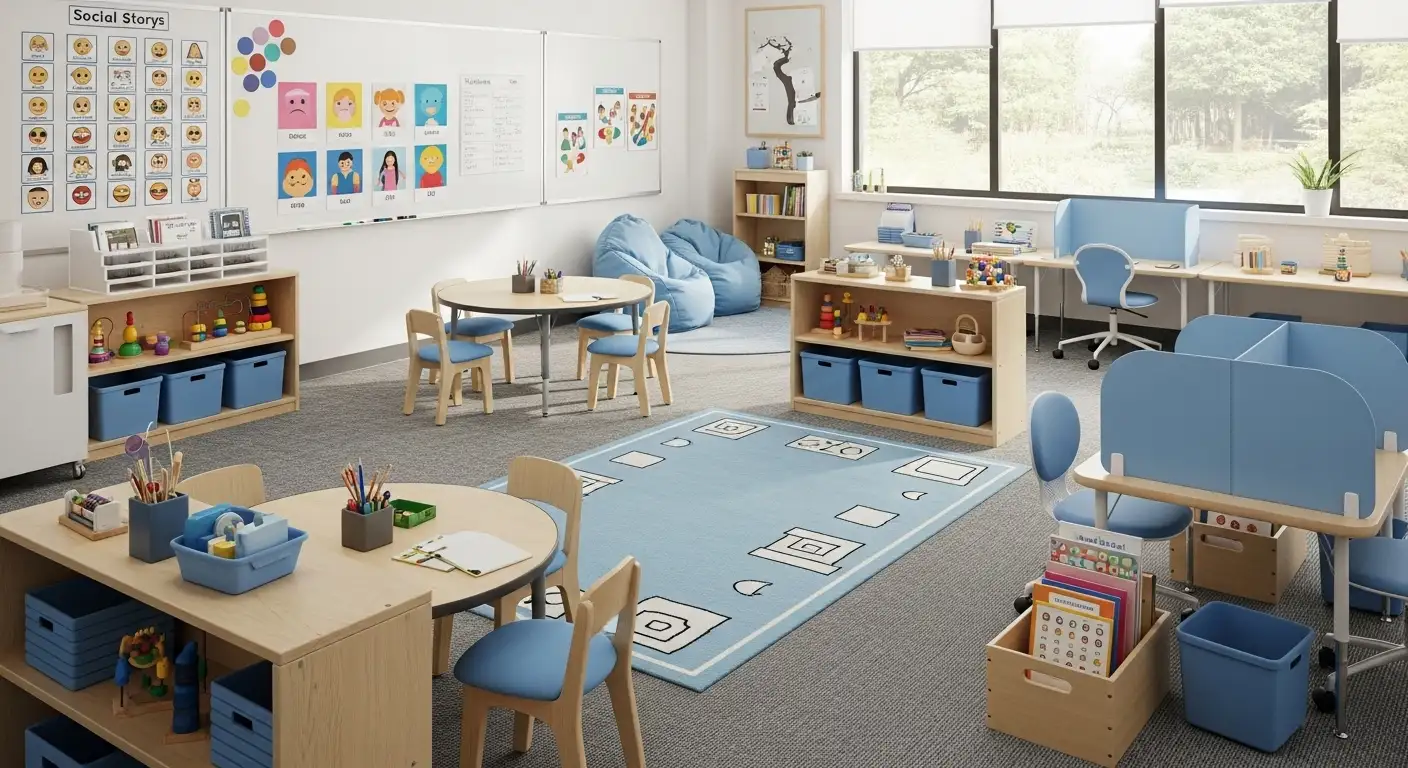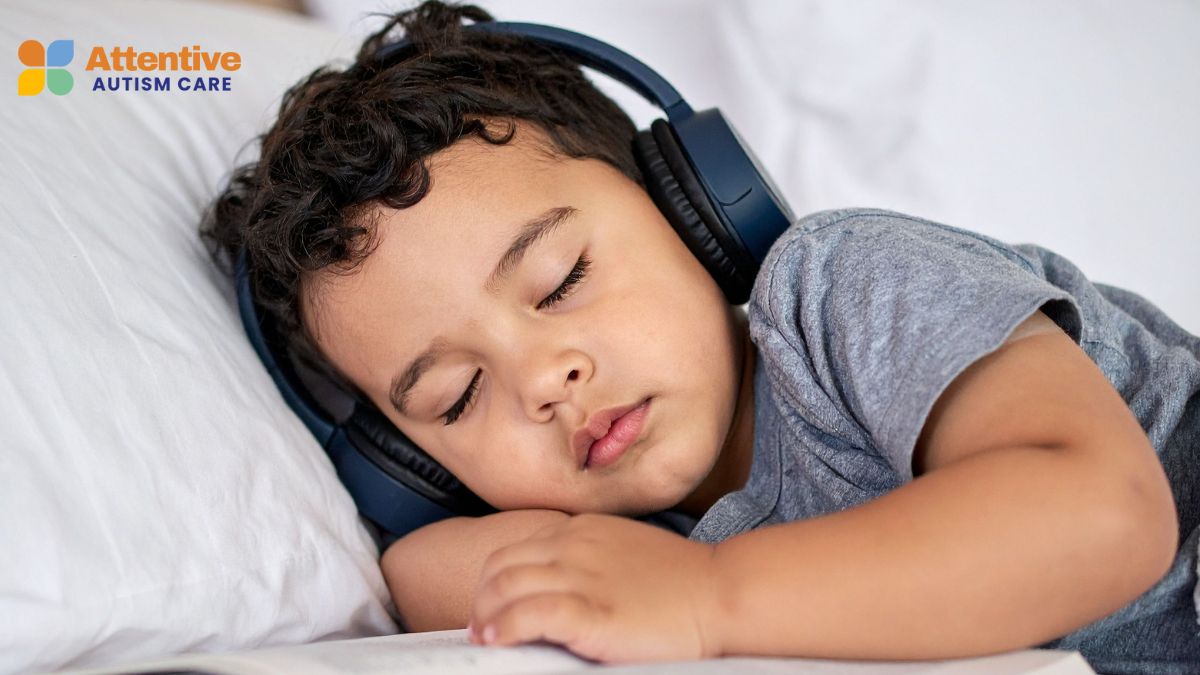Coping Strategies for Autism: Effective Approaches & Support
Discover effective coping strategies for autism, including practical tips and expert insights to support individuals and their families.

Key Points:
- Effective coping strategies for autism can include routines, sensory supports, communication tools, and emotional regulation techniques.
- Parents play a central role in supporting children with autism to manage stress and reduce meltdowns.
- ABA therapy offers personalized, skill-building approaches that help children strengthen their coping mechanisms in everyday life.
For many children on the autism spectrum, everyday situations can feel unpredictable or overwhelming. According to the CDC, about 1 in 31 children in the U.S. has been identified with autism spectrum disorder (ASD), and many of them experience challenges regulating emotions, adapting to new routines, or managing sensory input.
These challenges can interfere with learning, social interaction, and general well-being. That’s why it’s crucial for families to understand and apply effective coping strategies. These approaches help children self-regulate, communicate their needs, and build resilience in a world that may not always feel accommodating.
In this article, we’ll go over the most practical and evidence-informed methods that support children with autism in managing daily stressors—at home, in school, and beyond.
What are Coping Strategies for Autism?
Coping strategies for autism refer to techniques and supports that help individuals on the spectrum manage stress, sensory overload, emotional dysregulation, and changes in routine. These strategies can be behavioral, sensory-based, or emotional, and should be personalized to each child's unique profile.
For autistic children, daily experiences such as loud environments, unexpected changes, or communication barriers can lead to distress. Having clear, consistent coping methods in place makes it easier to reduce anxiety, prevent meltdowns, and increase functional independence.
Why Do Children With Autism Need Coping Strategies?
Children with autism often face a higher degree of emotional and sensory sensitivity than their neurotypical peers. Transitions, unfamiliar environments, or difficulty expressing feelings can easily lead to distress.
Unlike neurotypical children, those with autism may not automatically develop self-regulation techniques or adaptive behaviors. Instead, they may rely on repetitive behaviors, withdrawal, or aggression to manage discomfort. Coping strategies help bridge that gap by teaching healthier, more functional responses.
Coping tools aren’t one-size-fits-all. They must align with the child’s developmental level, sensory profile, language abilities, and preferred learning style. The ultimate goal is to increase autonomy and reduce anxiety in daily life.
What are the Most Effective Coping Strategies for Autism?
There is no single answer to managing autism-related challenges, but there are several proven categories of coping supports. Below are some of the most impactful areas parents and caregivers can focus on:
1. Establishing Predictable Routines
Creating consistent routines helps autistic children feel safe and in control. When expectations are clear, anxiety decreases.
Even minor unpredictability—like a sudden schedule change or a new caregiver—can cause distress. That’s why routines should be reinforced with structure and visuals.
Ways to support routine adherence include:
- Visual schedules: Use pictures, icons, or written steps to show what’s happening next.
- First-then boards: A simple board showing “first we do ___, then we do ___” helps manage transitions.
- Consistent transitions: Use timers or countdowns to signal changes in activity.
- Morning and bedtime rituals: Reduce stress at key points in the day by keeping steps the same each time.
When routines are disrupted, preparing the child in advance and using calming strategies can help minimize the impact.

2. Using Sensory Supports to Prevent Overload
Many children with autism have sensory processing differences. Bright lights, loud noises, textures, and smells may be overwhelming and lead to shutdowns or meltdowns. Sensory coping strategies help children self-regulate by either reducing sensory input or providing input in controlled ways.
It’s important to observe your child’s sensory preferences and avoid forcing exposure. Instead, offer choices and monitor how different strategies affect behavior and mood.
3. Teaching Emotional Regulation Techniques
Emotional regulation is often challenging for children on the spectrum. They may struggle to label emotions or understand how to respond to frustration or anxiety.
Helping a child develop emotional awareness and calming strategies can reduce meltdowns and build independence.
Helpful emotional regulation strategies include:
- Zones of Regulation: A visual system to help children identify and manage feelings (blue, green, yellow, red zones)
- Calming cards: Cards showing visual steps for breathing, counting, or taking a break
- Mindfulness activities: Gentle breathing or guided imagery exercises
- Feelings check-ins: Use visuals to help kids choose an emotion that fits their state
- Modeling and role-play: Practice scenarios together to show how to react calmly
Reinforce these strategies when the child is calm, and slowly introduce them during low-stress moments before expecting them to be used during meltdowns.
4. Promoting Communication Strategies
Frustration from not being understood is a major source of distress for children with autism. Whether a child is verbal, nonverbal, or in-between, building communication tools can dramatically reduce emotional outbursts.
Supportive communication strategies include:
- Picture Exchange Communication System (PECS) for nonverbal children
- Augmentative and Alternative Communication (AAC) devices or apps
- Core vocabulary boards for essential words and phrases
- Sign language or gestures to supplement spoken words
- Social stories to explain how to ask for help, say no, or express discomfort
Even children with speech may need scripts or prompts to express emotions effectively. Empowering them with multiple modes of expression supports their autonomy.

5. Reinforcing Positive Coping Skills Through Practice
Just like any skill, coping requires repetition, feedback, and reinforcement. ABA therapy and home practice can help generalize skills across environments.
Children benefit from having their efforts acknowledged. This builds motivation to use learned strategies consistently.
Ideas for reinforcing coping efforts include:
- Token systems for using a calm-down strategy successfully
- Praise for recognizing and naming emotions
- Charts or trackers to monitor progress on coping goals
- Role-play games to practice strategies in fun, low-stakes settings
Be patient. Progress may come slowly, but consistency from caregivers makes a major difference.
6. Providing Safe Spaces and Break Opportunities
Every child needs a safe place where they can go to reset. For autistic children, having a designated calm space at home or school can prevent escalation. These spaces should not feel like punishment—they’re meant to offer control and comfort.
What to include in a calming corner:
- Soft textures or dim lighting
- Favorite sensory toys
- Weighted items
- Visuals for breathing or grounding techniques
- Noise control elements like soft music or white noise
Giving children the option to request breaks before they become overwhelmed teaches self-advocacy and independence.
7. Involving the Whole Family in Support Plans
Coping strategies are most effective when everyone in the child’s environment is on the same page. Family members, educators, and therapists should collaborate closely.
Home strategies must be consistent with school approaches, and vice versa. Regular communication and shared tools improve outcomes.
Tips for family-centered coping support include:
- Hold regular family meetings to review progress and update strategies.
- Share visuals and systems with teachers, babysitters, and relatives.
- Involve siblings in learning how to support their brother or sister calmly.
- Encourage everyone to use the same coping language or visuals.
The more unified and predictable the environment, the more successful the coping strategies will be.
Support Your Child’s Progress With ABA Therapy
At Attentive Autism Care, we understand the unique challenges families face when it comes to building effective coping strategies for autism. Our ABA therapy programs are tailored to meet your child’s individual needs—whether it’s learning calming routines, improving communication, or managing sensory input.
We offer ABA therapy in Colorado, Utah, North Carolina, Maryland, New Mexico, and Nebraska, with compassionate professionals dedicated to your child’s growth.
Get in touch with us to discover how our personalized ABA therapy can support your child’s journey and make daily life more manageable for the whole family.




































































































